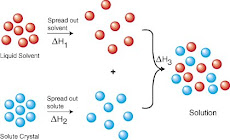Materials . . .
No Tickling, Please!
In a first step toward artificial skin, Stanford University created a polymer which encases parallel electrodes. The surface is 1,000x more sensitive than human skin and can detect the weight of a butterfly landing. Using polydimethylsiloxane patterned with micropillars, the material is also able to flex and return to its original shape.
Do You Care?
No one knows exactly how it works, but when you're bleeding, does it matter? University of Maryland researchers developed an inexpensive polymer gelatin substance that stops bleeding in minutes. The new synthetic hydrogel is made with water and acrylamide, a fibrous polymer that works with blood clotting proteins.
If you find this subject interesting, subscribe to the GlobalSpec e-Newsletter, DirectU2 The world of Medical Equipment Design.
Composites . . .
Rough Conduct
New to the family of Carbo e-Therm super-composite materials, Future Carbon just launched CarboImpreg. The high-efficiency coating impregnates rough surfaces to make them electrically conductive, but at a safe, low voltage. The product soaks into a surface and makes it possible for the material to be warmed with the proper voltage.
Dude, Where's My Car?
A composite that's 10x stronger than steel at a fraction of the weight seems great. Since its main component is illegal in the U.S., Canada plans to corner the market on a car made of hemp composite. Calgary's Motive Industries will debut the electric Kestrel soon, and the hippie jokes will surely follow.
miércoles, 13 de octubre de 2010
GOOD NEWS
Suscribirse a:
Entradas (Atom)
Vistas de página en total
GREEN CHEMICALS
The Green Seal certification is granted by the organization with that name and has a great number of members contributing with the requirements to pass a raw material or a chemical product as "green". Generally for a material to be green, has to comply with a series of characteristics like: near neutral pH, low volatility, non combustible, non toxic to aquatic life, be biodegradable as measured by oxygen demand in accordance with the OECD definition.
Also the materials have to meet with toxicity and health requirements regarding inhalation, dermal and eye contact. There is also a specific list of materials that are prohibited or restricted from formulations, like ozone-depleting compounds and alkylphenol ethoxylates amongst others. Please go to http://www.greenseal.com/ for complete information on their requirements.
For information on current issues regarding green chemicals, see the blog from the Journalist Doris De Guzman, in the ICIS at: http://www.icis.com/blogs/green-chemicals/.
Certification is an important — and confusing — aspect of green cleaning. Third-party certification is available for products that meet standards set by Green Seal, EcoLogo, Energy Star, the Carpet & Rug Institute and others.
Manufacturers can also hire independent labs to determine whether a product is environmentally preferable and then place the manufacturer’s own eco-logo on the product; this is called self-certification. Finally, some manufacturers label a product with words like “sustainable,” “green,” or “earth friendly” without any third-party verification.
“The fact that there is not a single authoritative standard to go by adds to the confusion,” says Steven L. Mack M.Ed., director of buildings and grounds service for Ohio University, Athens, Ohio.
In www.happi.com of June 2008 edition, there is a report of Natural formulating markets that also emphasises the fact that registration of "green formulas" is very confused at present, due to lack of direction and unification of criteria and that some governmental instittion (in my opinion the EPA) should take part in this very important issue.
Also the materials have to meet with toxicity and health requirements regarding inhalation, dermal and eye contact. There is also a specific list of materials that are prohibited or restricted from formulations, like ozone-depleting compounds and alkylphenol ethoxylates amongst others. Please go to http://www.greenseal.com/ for complete information on their requirements.
For information on current issues regarding green chemicals, see the blog from the Journalist Doris De Guzman, in the ICIS at: http://www.icis.com/blogs/green-chemicals/.
Certification is an important — and confusing — aspect of green cleaning. Third-party certification is available for products that meet standards set by Green Seal, EcoLogo, Energy Star, the Carpet & Rug Institute and others.
Manufacturers can also hire independent labs to determine whether a product is environmentally preferable and then place the manufacturer’s own eco-logo on the product; this is called self-certification. Finally, some manufacturers label a product with words like “sustainable,” “green,” or “earth friendly” without any third-party verification.
“The fact that there is not a single authoritative standard to go by adds to the confusion,” says Steven L. Mack M.Ed., director of buildings and grounds service for Ohio University, Athens, Ohio.
In www.happi.com of June 2008 edition, there is a report of Natural formulating markets that also emphasises the fact that registration of "green formulas" is very confused at present, due to lack of direction and unification of criteria and that some governmental instittion (in my opinion the EPA) should take part in this very important issue.










































